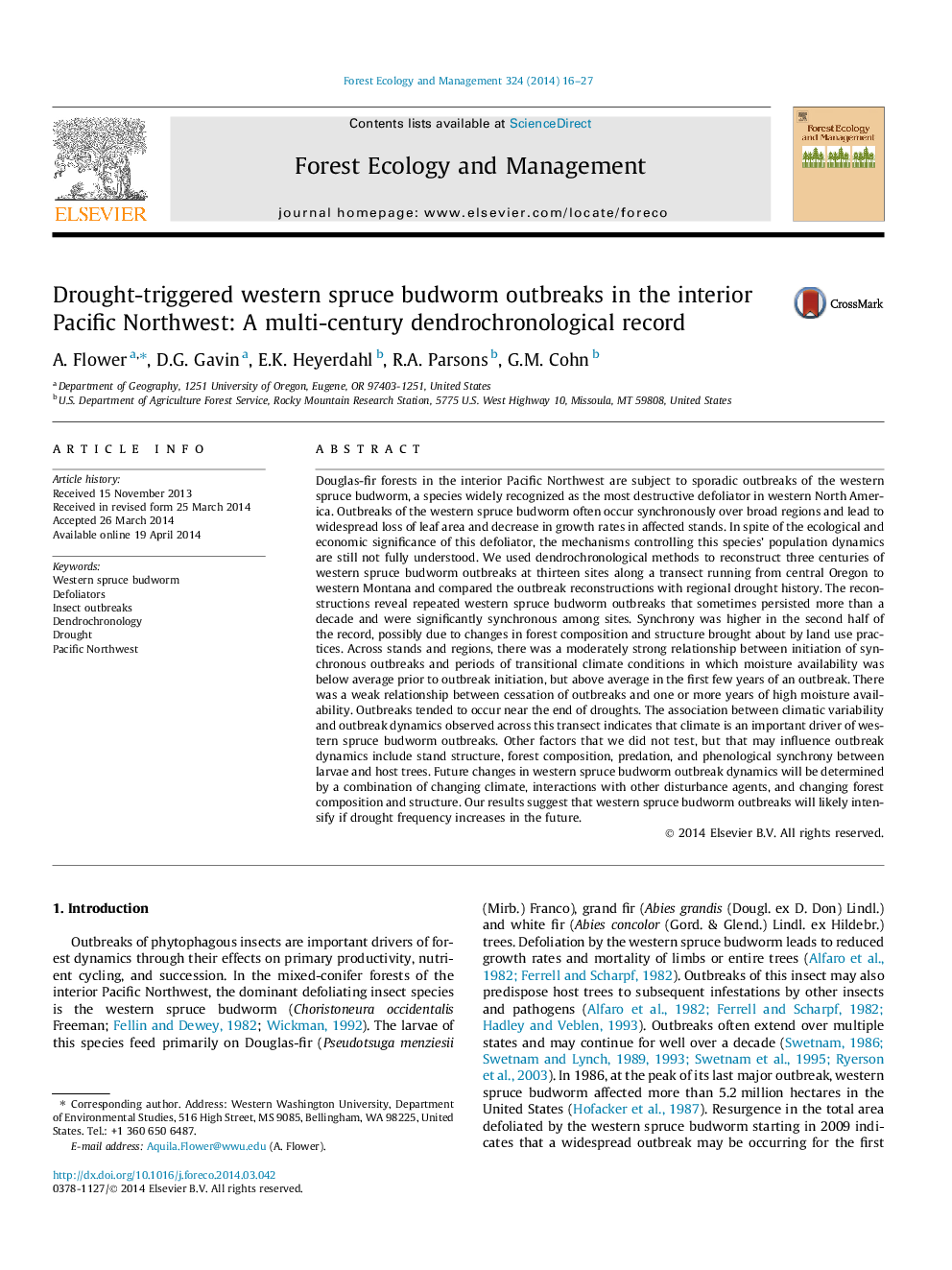| کد مقاله | کد نشریه | سال انتشار | مقاله انگلیسی | نسخه تمام متن |
|---|---|---|---|---|
| 86620 | 159200 | 2014 | 12 صفحه PDF | دانلود رایگان |
• We used dendrochronology to reconstruct western spruce budworm outbreaks.
• Our record covers three centuries in the interior Pacific Northwest.
• Outbreaks were often synchronous across the region.
• Outbreaks tended to occur during periods of transitional climate.
• Increased drought frequency could lead to more outbreaks in the future.
Douglas-fir forests in the interior Pacific Northwest are subject to sporadic outbreaks of the western spruce budworm, a species widely recognized as the most destructive defoliator in western North America. Outbreaks of the western spruce budworm often occur synchronously over broad regions and lead to widespread loss of leaf area and decrease in growth rates in affected stands. In spite of the ecological and economic significance of this defoliator, the mechanisms controlling this species’ population dynamics are still not fully understood. We used dendrochronological methods to reconstruct three centuries of western spruce budworm outbreaks at thirteen sites along a transect running from central Oregon to western Montana and compared the outbreak reconstructions with regional drought history. The reconstructions reveal repeated western spruce budworm outbreaks that sometimes persisted more than a decade and were significantly synchronous among sites. Synchrony was higher in the second half of the record, possibly due to changes in forest composition and structure brought about by land use practices. Across stands and regions, there was a moderately strong relationship between initiation of synchronous outbreaks and periods of transitional climate conditions in which moisture availability was below average prior to outbreak initiation, but above average in the first few years of an outbreak. There was a weak relationship between cessation of outbreaks and one or more years of high moisture availability. Outbreaks tended to occur near the end of droughts. The association between climatic variability and outbreak dynamics observed across this transect indicates that climate is an important driver of western spruce budworm outbreaks. Other factors that we did not test, but that may influence outbreak dynamics include stand structure, forest composition, predation, and phenological synchrony between larvae and host trees. Future changes in western spruce budworm outbreak dynamics will be determined by a combination of changing climate, interactions with other disturbance agents, and changing forest composition and structure. Our results suggest that western spruce budworm outbreaks will likely intensify if drought frequency increases in the future.
Journal: Forest Ecology and Management - Volume 324, 15 July 2014, Pages 16–27
